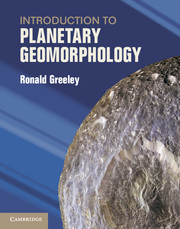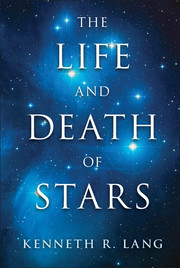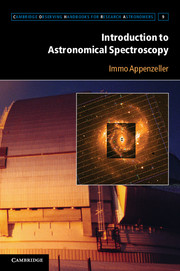Refine listing
Actions for selected content:
17000 results
List of symbols
-
- Book:
- Rotating Relativistic Stars
- Published online:
- 05 July 2013
- Print publication:
- 11 February 2013, pp xvii-xxii
-
- Chapter
- Export citation
6 - Approximation methods for equilibria
-
- Book:
- Rotating Relativistic Stars
- Published online:
- 05 July 2013
- Print publication:
- 11 February 2013, pp 135-156
-
- Chapter
- Export citation
8 - Quasinormal modes
-
- Book:
- Rotating Relativistic Stars
- Published online:
- 05 July 2013
- Print publication:
- 11 February 2013, pp 206-249
-
- Chapter
- Export citation
3 - Asymptotics, virial identities, and nonaxisymmetric equilibria
-
- Book:
- Rotating Relativistic Stars
- Published online:
- 05 July 2013
- Print publication:
- 11 February 2013, pp 59-97
-
- Chapter
- Export citation
Frontmatter
-
- Book:
- Rotating Relativistic Stars
- Published online:
- 05 July 2013
- Print publication:
- 11 February 2013, pp i-vi
-
- Chapter
- Export citation
9 - Stellar stability
-
- Book:
- Rotating Relativistic Stars
- Published online:
- 05 July 2013
- Print publication:
- 11 February 2013, pp 250-303
-
- Chapter
- Export citation
Preface
-
- Book:
- Rotating Relativistic Stars
- Published online:
- 05 July 2013
- Print publication:
- 11 February 2013, pp xv-xvi
-
- Chapter
- Export citation
Contents
-
- Book:
- Rotating Relativistic Stars
- Published online:
- 05 July 2013
- Print publication:
- 11 February 2013, pp ix-xiv
-
- Chapter
- Export citation
Appendix A - Lie derivatives, forms, densities, and integration
-
- Book:
- Rotating Relativistic Stars
- Published online:
- 05 July 2013
- Print publication:
- 11 February 2013, pp 349-368
-
- Chapter
- Export citation
1 - Stationary, axisymmetric equilibria
-
- Book:
- Rotating Relativistic Stars
- Published online:
- 05 July 2013
- Print publication:
- 11 February 2013, pp 1-30
-
- Chapter
- Export citation

Introduction to Planetary Geomorphology
-
- Published online:
- 05 February 2013
- Print publication:
- 21 February 2013

The Life and Death of Stars
-
- Published online:
- 05 February 2013
- Print publication:
- 25 March 2013

Understanding the Universe
- An Inquiry Approach to Astronomy and the Nature of Scientific Research
-
- Published online:
- 05 February 2013
- Print publication:
- 18 February 2013

Introduction to Astronomical Spectroscopy
-
- Published online:
- 05 January 2013
- Print publication:
- 17 December 2012
4 - Optical-Range Grating and Prism Spectrometers
-
- Book:
- Introduction to Astronomical Spectroscopy
- Published online:
- 05 January 2013
- Print publication:
- 17 December 2012, pp 81-126
-
- Chapter
- Export citation
9 - Special Techniques of the FIR and Submillimeter Range
-
- Book:
- Introduction to Astronomical Spectroscopy
- Published online:
- 05 January 2013
- Print publication:
- 17 December 2012, pp 214-223
-
- Chapter
- Export citation
5 - Other Techniques for the Optical Spectral Range
-
- Book:
- Introduction to Astronomical Spectroscopy
- Published online:
- 05 January 2013
- Print publication:
- 17 December 2012, pp 127-144
-
- Chapter
- Export citation
8 - Spectroscopy at Radio Wavelengths
-
- Book:
- Introduction to Astronomical Spectroscopy
- Published online:
- 05 January 2013
- Print publication:
- 17 December 2012, pp 200-213
-
- Chapter
- Export citation
Appendix: List of Acronyms
-
- Book:
- Introduction to Astronomical Spectroscopy
- Published online:
- 05 January 2013
- Print publication:
- 17 December 2012, pp 239-244
-
- Chapter
- Export citation
1 - Historical Remarks
-
- Book:
- Introduction to Astronomical Spectroscopy
- Published online:
- 05 January 2013
- Print publication:
- 17 December 2012, pp 1-25
-
- Chapter
- Export citation
